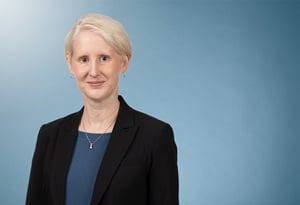Dot Benefits? Strategies for Protecting Your Brand in the New Top-Level Domains
By Jennifer L. Dean and Tore Thomas DeBella
On March 26, 2013, the Internet Corporation for Assigned Names and Numbers (“ICANN”) will launch the Trademark Clearinghouse, a master repository of trademarks intended to assist brand owners with registering new domain names matching their trademarks, and to help block cybersquatters who might wish to do the same. Between now and then, expect to see brand owners evaluating the costs and benefits of participating in the Clearinghouse, and working to incorporate the Clearinghouse’s mechanisms into an effective brand protection strategy. This article is intended to help brand owners achieve those goals.
Background: ICANN’s TLD Program
A “top-level” domain or “TLD” is the portion of a domain name “to the right of the dot” (e.g., name.com). By contrast, a “second-level” domain is the portion “to the left of the dot” (e.g., name.com).
ICANN is adding hundreds of new TLDs to the 22 already in existence, such as .com, .net, .info, and .biz. ICANN’s current TLD program enabled businesses to apply to create and manage four kinds of TLDs: generic word TLDs (e.g., .shop); corporate TLDs (.brand); community TLDs (.redcross); and geographic TLDs (.berlin).
ICANN received 1,930 such TLD applications. By the end of 2013, you might see new websites associated with domain names like “www.target.shopping” and “www.scrabble.game” instead of, or in addition to, the usual .com websites.
Brand-Protection Mechanisms for the New Top-Level Domains
TLD expansion will undoubtedly affect brand owners. They will be able to register second-level domain names matching their brands in the new TLDs. They will also want to prevent unauthorized third parties from registering those same second-level domains.
ICANN has established two procedures to assist in these efforts: a “sunrise” service and a “claims” service. Brand owners can use both services by entering their trademarks in the Clearinghouse’s centralized database, available at www.trademark-clearinghouse.com, starting March 26, 2013.
- Clearinghouse Eligibility and Costs: Generally speaking, only national trademark registrations can be entered in the Clearinghouse. In the U.S., only federal Principal Register registrations will suffice. Rarely, other proof of marks will be accepted, such as court-validated unregistered trademarks. The annual Clearinghouse fee is $150/mark, with discounts available for high-volume or multi-year registrations.
- Trademark Sunrise: Before going live, each new TLD registry must offer a 30-day “sunrise period.” During this period, owners of Clearinghouse-registered marks may apply to register second-level domain names matching their trademarks before the public can do so. Brand owners wishing to participate in the sunrise period must also submit proof of use of their marks, in addition to fulfilling the eligibility requirements described above.
- Generic TLDs (e.g. .shop) will offer second-level domain sunrise periods; branded domains (.brand) will have the option of remaining closed. It is still an open question as to whether some generic TLDs might also remain “closed” -- meaning, whether a single player could control registration of all second-level domains in a TLD (for instance, Amazon has applied for the “.app”, “.video” and “.book” TLDs).
- Currently, the sunrise periods must run for at least 30 days before the TLDs are opened for public second-level domain registration. Current guidelines specify that sunrise participants will only be able to register second-level domains precisely matching their marks registered in the Clearinghouse.
- Trademark Claims: Even if a brand owner decides not to register a domain name during the sunrise period, it may still guard against third parties’ unauthorized registration of the name by using the Clearinghouse’s claims service. The service will notify the brand owner when a third party applies to register a second-level domain that precisely matches the brand owner’s trademark on file with the Clearinghouse. The Clearinghouse will also notify the applicant of the brand owner’s rights. This service is currently expected to be provided for 60 days following registry launch.
Clearinghouse Cost-Benefit Analysis As many have pointed out, the Clearinghouse does not offer comprehensive protection for brand owners. Some of the more significant gaps are as follows:
- The $150 Clearinghouse fee does not cover the cost of registering the corresponding second-level domain during the sunrise period. The $150 fee, in essence, only pays for the opportunity to register the name before the public has a chance to do so.
- The claims service does not block cybersquatters from registering conflicting domains; it merely notifies both parties when such activity occurs, and at present, only within 60 days of each registry’s launch.
- The sunrise and claims services are currently limited to domain names that precisely match marks on file with the Clearinghouse. The services do not cover variations that might be considered confusingly similar.
- The sunrise and claims services are currently limited in duration.
But the following benefits of Clearinghouse enrollment are often overlooked:
- Enrollment may ultimately facilitate brand owners’ access to a new form of legal challenge called the Uniform Rapid Suspension (URS) system. The URS standards for challenging cybersquatters would resemble those in the current UDRP model, but the complaint process and duration would be streamlined, and the objectionable domain name suspended for the duration of the registration rather than transferred to the mark owner (assuming the challenge is successful).
- Claims service notifications regarding domain name conflicts will likely serve as evidence of bad faith in a subsequent URS or UDRP proceeding.
In deciding whether to pay to register each of their marks in the Clearinghouse, we suggest that brand owners consider:
How valuable is the trademark to my business?
- Is it one of my “crown jewel” brands?
- If someone else registered an identical domain name in a new TLD, could it harm my business?
- Do I care enough about this brand that I would pay to initiate a legal challenge against someone who registered an identical domain name?
- Am I willing to incur the annual Clearinghouse and renewal costs for each mark and domain name that I register, especially if the domain name registrations are purely “defensive” in nature?
How likely is it that someone else will register a domain name identical to my brand in a new TLD?
- Is my mark famous or well-known?
- Have I encountered cybersquatting problems in existing TLDs?
- In foreign jurisdictions, is my brand owned by unrelated entities that might have valid claims to second-level domains matching my mark?
Do I want to register the domain name for my business’s use?
- Am I happy with the second-level domain name my business currently uses?
- Is the new TLD likely to be popular?
- Are there multiple alternative TLDs that might suit my brand (e.g. .shop and .shopping) such that registration in any one TLD is not critical?
- Does the new TLD relate to my business’s industry or industries, or represent an area of potential expansion for my business?
- Is registration of the domain name consistent with my business’s overall domain name acquisition and enforcement strategy?
While the particular decision calculus will vary among businesses, the above questions are starting points for businesses’ use in determining whether to participate in the Clearinghouse. For more information about the Clearinghouse or the TLD program in general, please contact the authors listed above or your regular Drinker Biddle contact.
The material contained in this communication is informational, general in nature and does not constitute legal advice. The material contained in this communication should not be relied upon or used without consulting a lawyer to consider your specific circumstances. This communication was published on the date specified and may not include any changes in the topics, laws, rules or regulations covered. Receipt of this communication does not establish an attorney-client relationship. In some jurisdictions, this communication may be considered attorney advertising.



